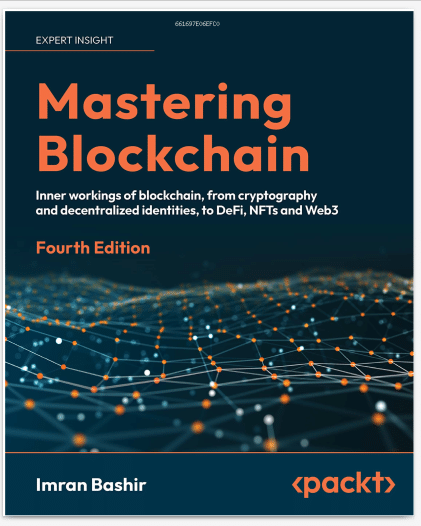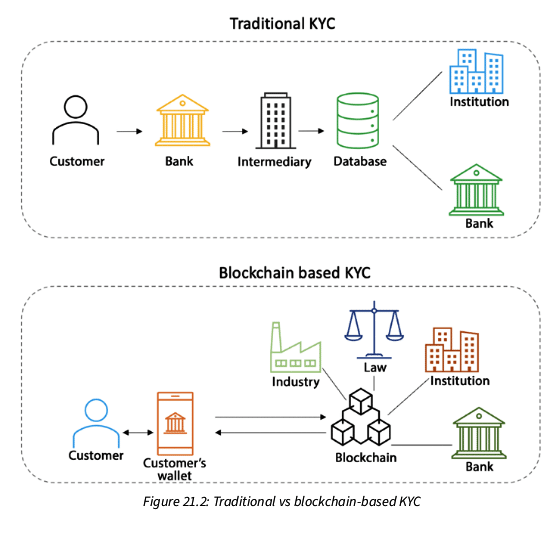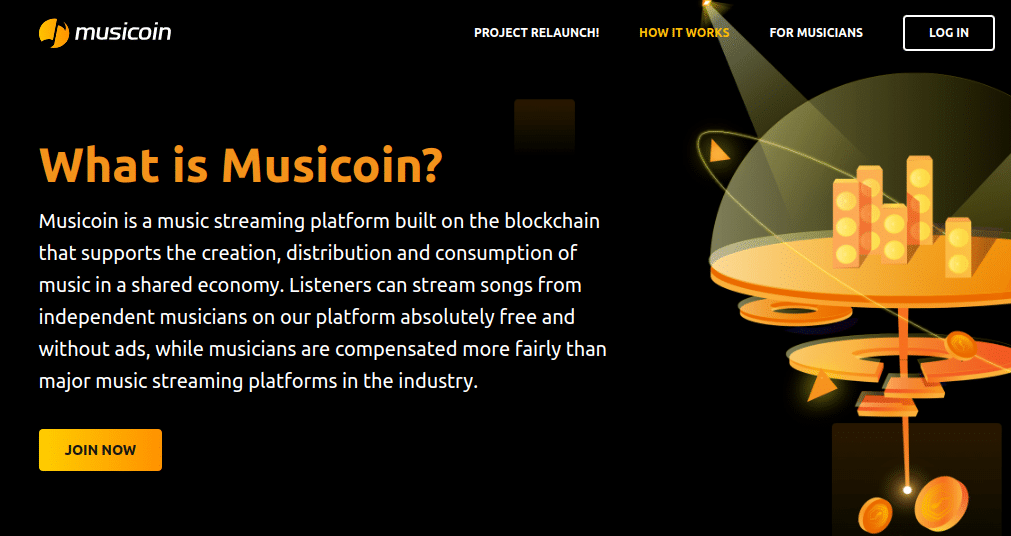‘Mastering Blockchain’ is for all of us….technologists, students and business executives. If you want to learn almost everything there is to know about blockchain technology, read it.
“Blockchain is the backbone of cryptocurrencies. It has had a massive impact in many sectors, including finance, supply chains, healthcare, government, and media.” This statement in the ‘about’ of this book tells us what to expect in it.
The subtitle of this book is ‘Inner workings of blockchain, from cryptography and decentralised identities, to DeFi, NFTs and Web3’. Its author Imran Bashir has an MSc in information security from Royal Holloway, University of London.
For whom is it meant?
We are told early in the book that its goal is “to teach the theory and practice of distributed ledger technology to anyone interested in learning this fascinating new subject.”
Distributed ledger technology, or DLT, is the system that allows for the simultaneous updating, validation and access of transactions across a networked database. In a word, DLT is what blockchains are created from.
You’re promised a “comprehensive and in-depth reference” of distributed ledger technology for both the expert and beginner.
Does it meet its goal?
Concepts are explained in quite some detail. In the first chapter titled ‘Blockchain 101’, we are explained what’s behind the growth of blockchain technology, distributed systems and the history of blockchain (including Bitcoin and electronic cash).
Quickly enough the text takes us to the deeper end of the pool — with an introduction to blockchain. This covers blockchain’s architecture, as well as blockchain by layers and in business. We also get hints of this technology’s generic elements, functionality, and limitations.
You could gain from this book if you’re either a seasoned technologist, student, business executive or enthusiast. That indeed is a broad range.
You can use it to understand blockchain technology in depth, or as a reference work to create applications for blockchain. It’s also a learning resource for exams and certifications on cryptocurrency and blockchain technology.
Those who are looking at new aspects of blockchain can go through the brief descriptions of the varied types of blockchain. These include distributed ledgers, shared ledgers, public blockchains, private blockchains, semi-private blockchains, permissioned ledgers, fully private and proprietary blockchains, tokenized blockchains, tokenless blockchains, and layer 1/2 blockchains.
Catchwords from blockchain technology pop up here, there and everywhere — decentralisation, symmetric cryptography, asymmetric cryptographic, consensus algorithms, Bitcoin architecture, Bitcoin in practice, smart contracts, the Ethereum architecture, Ethereum in practice, and so on.
The book has 23 chapters in all. These touch on the concepts of web3 development using Ethereum, latest developments in Ethereum (Beacon Chain, sharding and future upgrades), and the Hyperledger project from The Linux Foundation.
Tokenization (the topic, stable coins, initial coin offerings, and token development standards), enterprise blockchains, scalability, blockchain privacy, security, and decentralised identity/finance are covered in some detail.
Given the complexity of the subject, it is not surprising that this book runs into a total of 819 pages.
If you want to look beyond the nuts and bolts of the technology itself, move to Chapter 22 which is titled ‘Blockchain Applications and What’s Next’. This offers useful insights into how this technology connects with IoT architecture. There are specific tips on how to implement blockchain-based IoT “in practice.” This includes setting it up for Raspberry Pi, Raspberry Pi node, Node.js, building the electronic circuit, and even a Solidity contract.
The use cases of blockchain are particularly interesting
We are given an idea of how this technology can be used in border control (pg 735), elections, and citizen identification (pg 737). Links are given to show how the technology is being used already — blockchain audited presidential vote in Sierra Leone, and in the city of Zug in Switzerland.
In elections, blockchain helps reduce vulnerabilities. This comes by way of end-to-end security and transparency in the process. The immutability it offers ensures that votes cast once cannot be cast again. A smart contract can maintain a list of already-cast votes with biometric IDs. Zero-knowledge proofs (ZKPs) can be used on the blockchain to protect voters’ privacy.
Blockchain can help with citizen identification, and with digital identities on social networks and forums too. Users can see who has used their data and for what purpose, and control access to it. Healthcare could benefit majorly, as blockchain can offer an “immutable, auditable, and transparent system that traditional P2P networks cannot.” It can also help to detect the sale of counterfeit medicines.
Lack of interoperability compromises privacy, and leads to data breaches, high costs and fraud. Blockchain can help, we’re told, with media issues like content distribution, rights management, and royalty payments to artists. Take the example of Musicoin (https://musicoin.org), which seems almost too good to be true. Their website promises (this is not part of the book): “Musicoin is a music streaming platform built on the blockchain that supports the creation, distribution and consumption of music in a shared economy. Listeners can stream songs from independent musicians on our platform absolutely free and without ads, while musicians are compensated more fairly than major music streaming platforms in the industry.”
Chapter 21 looks at how decentralised finance can work in various financial fields such as trading, exchanges, post-trade settlement, and financial crime prevention.
The book is supplemented with example code files on GitHub. Readers can also download a PDF file with colour images of screenshots and diagrams used in the book
(see https://packt.link/5y4vk).
Like with other books from this publisher, this one too invites feedback.
If blockchain is your thing, go for it. This book could surely help those who want to delve deeper into the field.


















































































